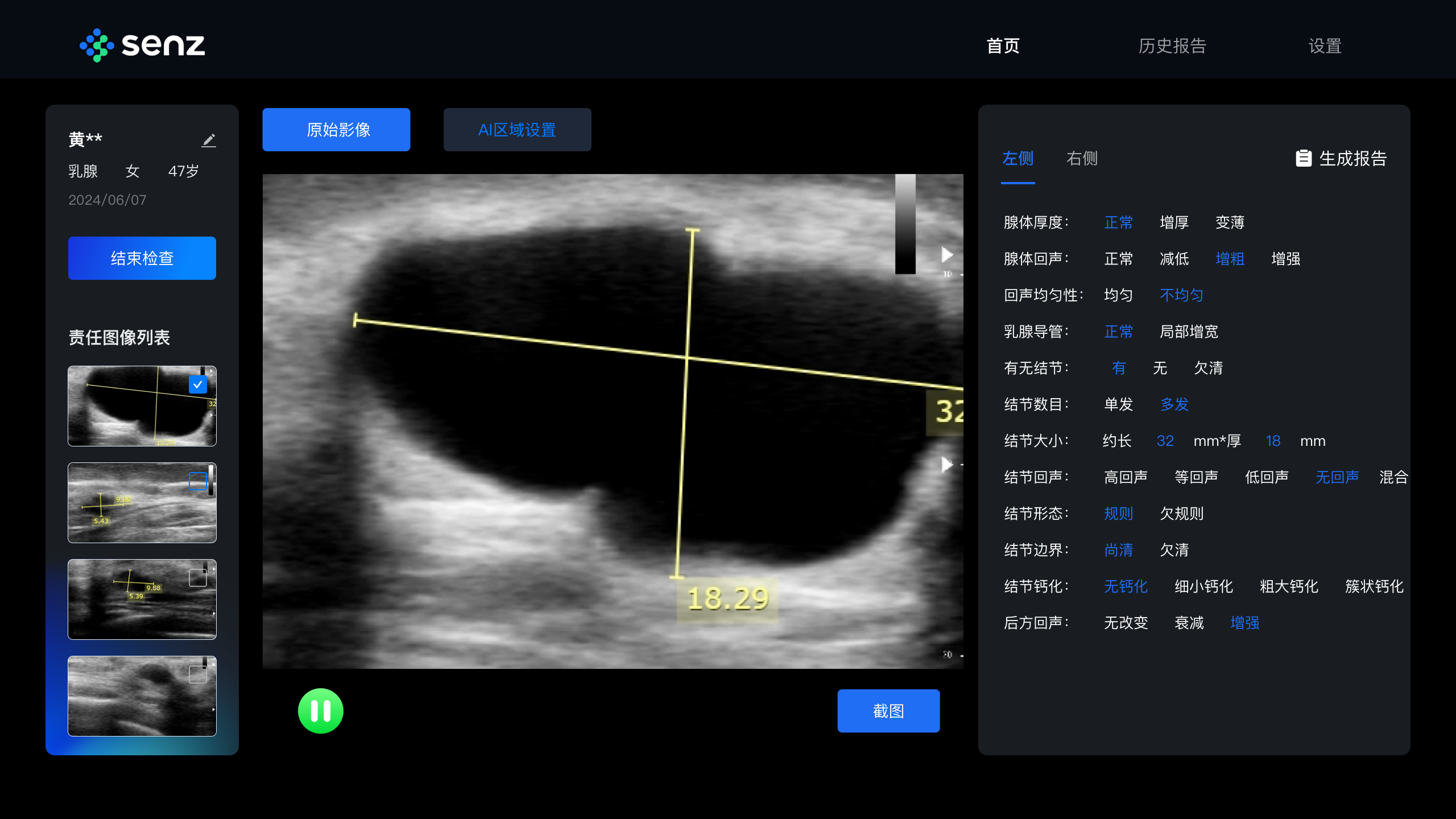
Breast assisted diagnosis
This software utilizes AI technology to automatically determine breast sections, analyze breast nodules, and measure routine parameters, resulting in extremely high efficiency for doctors.
This software adopts self-developed low-level dynamic ultrasound image segmentation algorithm, deep neural network model, and small object detection algorithm. It uses 10000 ultrasound data for model training, and the key model consists of dynamic lesion recognition, section classification, section segmentation, and attention model
Usage scenario
This software is mainly used for breast disease ultrasound examination in hospital ultrasound departments and breast disease screening in grassroots medical institutions. According to the WHO report, there are 2.26 million new cases of breast cancer, officially replacing lung cancer as the world's largest cancer for the first time.
In January 22, the National Health Commission issued the breast cancer Screening Work Plan, which proposed to provide breast cancer screening services for women of the right age. The screening services give priority to rural women and urban women living on subsistence allowances. Breast ultrasound examination is one of the main methods of breast examination. However, due to the difficulty in distinguishing small lesions, the difficulty and time-consuming nature of the examination, especially in grassroots screening scenarios.
This software uses functions such as nodule recognition and lesion segmentation to help doctors quickly identify nodules, analyze nodule characteristics, reduce differences in film reading, and reduce missed diagnosis rates.
Performance
Deployment
Using ultrasound models: GE/Philips/Mindray/Domestic handheld ultrasound
Available computing units: mobile phone/NVIDIA Xavier/computer/Cloud
Available deployment platforms: Android/Windows/Linux
Maturity
Registration certificate
Yes






